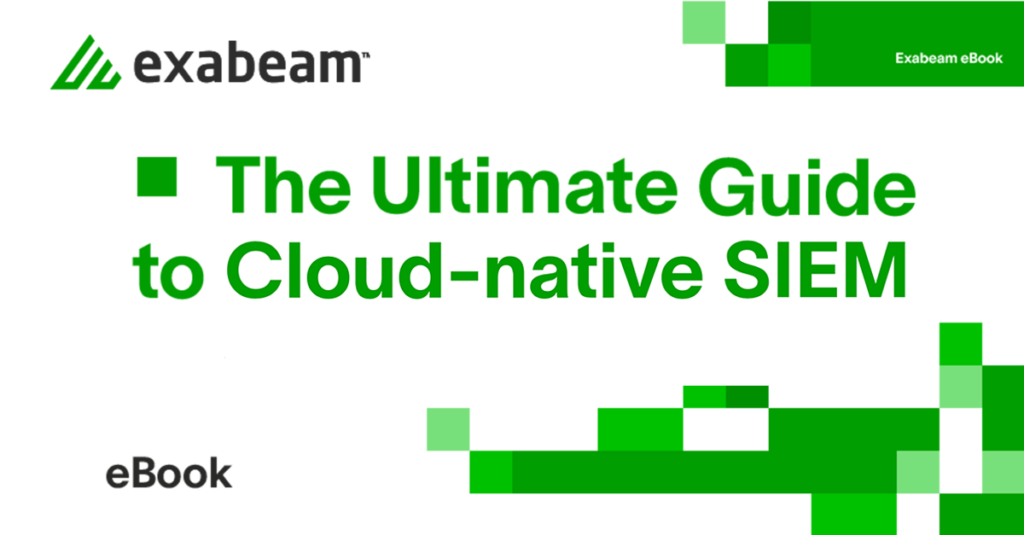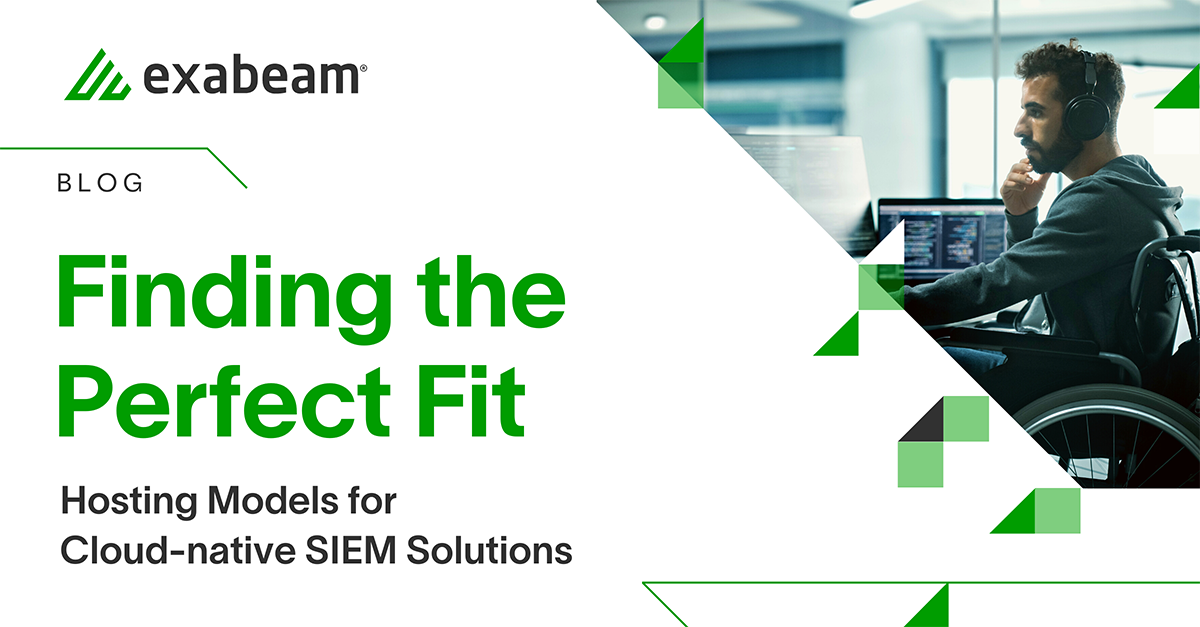As organizations continue to embrace cloud-native security information and event management (SIEM) solutions, it’s important to understand the various hosting models available and select the one that best fits your organization’s needs. In this third post of our series on cloud-native SIEM, we’ll explore the pros and cons of different hosting models, including public cloud, private cloud, and hybrid cloud hosting.
Hosting models play an essential role in determining how your cloud-native SIEM solution is deployed, managed, and maintained. The right choice depends on factors such as your organization’s security requirements, compliance needs, and existing IT infrastructure. Let’s dive into the three main hosting models and their respective benefits and considerations.
In this article:
- Public cloud hosting
- Private cloud hosting
- Hybrid cloud hosting
- Five tips for choosing the right cloud-native SIEM hosting model
- Conclusion
Public cloud hosting
Public cloud hosting involves deploying your cloud-native SIEM solution on a shared infrastructure provided by a third-party cloud service provider, such as Amazon Web Services (AWS), Microsoft Azure, or Google Cloud Platform (GCP).
The benefits of public cloud hosting include:
- Scalability — Public cloud hosting offers virtually unlimited scalability, allowing your organization to easily handle fluctuating data volumes and accommodate growth.
- Cost-effectiveness — With a pay-as-you-go pricing model, public cloud hosting enables you to only pay for the resources you use, reducing upfront costs and ongoing maintenance expenses.
- Fast deployment — Public cloud providers offer pre-built services and tools, enabling rapid deployment of your cloud-native SIEM solution.
Some considerations of public cloud hosting are:
- Data privacy and compliance — Public cloud hosting may raise concerns related to data privacy and compliance, as your security data is stored in a shared environment alongside other organizations’ data. However, public cloud providers typically offer robust security measures and compliance certifications to address these concerns.
- Vendor lock-in — With public cloud hosting, you may become reliant on a single provider’s infrastructure and services, making it difficult to switch providers or migrate back to an on-premises solution.
Private cloud hosting
Private cloud hosting involves deploying your cloud-native SIEM solution on a dedicated, single-tenant infrastructure, either on-premises or through a third-party provider.
The benefits of private cloud hosting include:
- Enhanced control — Private cloud hosting offers greater control over your infrastructure and security data, enabling you to customize your environment to meet specific security and compliance requirements.
- Data privacy — By hosting your SIEM solution on a dedicated infrastructure, private cloud hosting can alleviate concerns related to data privacy and security.
Some considerations of private cloud hosting are:
- Cost — Private cloud hosting typically requires a more significant upfront investment in infrastructure and ongoing maintenance costs compared to public cloud hosting.
- Scalability limitations — While private clouds can be designed for scalability, it may not be as seamless or cost-effective as with public cloud hosting.
Hybrid cloud hosting
Hybrid cloud hosting involves deploying your cloud-native SIEM solution on a combination of public and private cloud infrastructures, allowing you to leverage the benefits of both hosting models.
The benefits of hybrid cloud hosting include:
- Flexibility — Hybrid cloud hosting offers flexibility by enabling you to choose where to store and process your security data based on specific requirements, such as data privacy, compliance, or performance.
- Cost optimization — By leveraging both public and private cloud resources, you can optimize costs by storing sensitive data on a private cloud while leveraging the scalable resources of the public cloud for less critical workloads.
Some considerations of hybrid cloud hosting are:
- Complexity — Managing a hybrid cloud environment can be more complex than dealing with a single hosting model, as you’ll need to ensure seamless integration and data flow between the different infrastructures.
- Security challenges — Hybrid cloud hosting may introduce additional security challenges, as you must ensure consistent security policies and controls across both public and private cloud environments.
Five tips for choosing the right cloud-native SIEM hosting model
Selecting the most suitable hosting model for your cloud-native SIEM solution depends on multiple factors, including your organization’s security needs, budget, and IT resources. Here are five tips to help you make the right choice:
- Assess your security requirements — Determine the level of control, data privacy, and compliance your organization needs. If you have stringent security requirements or handle sensitive data, private or hybrid cloud hosting may be more appropriate.
- Evaluate your IT infrastructure — Consider your existing IT infrastructure and whether it can support the deployment of a private or hybrid cloud environment. If you lack the necessary resources or expertise, a public cloud hosting model may be better for your organization.
- Estimate your data volume and growth — Analyze your current and projected data volumes and how they may affect the scalability requirements of your SIEM solution. Public cloud hosting offers the most seamless scalability, while private and hybrid cloud hosting can also be designed to accommodate growth.
- Consider your budget — Compare the costs associated with each hosting model, including upfront investment, ongoing maintenance, and resource usage. Public cloud hosting often provides the most cost-effective option, particularly for organizations with limited budgets or fluctuating resource needs.
- Consult with stakeholders — Engage with various stakeholders within your organization, including IT, security, and compliance teams, to gather input and ensure alignment with business objectives and requirements.
Conclusion
Selecting the right hosting model for your cloud-native SIEM solution is a critical step in ensuring its effectiveness and aligning with your organization’s specific needs. By carefully weighing the benefits and considerations of public, private, and hybrid cloud hosting, you can make an informed decision that supports your security operations and enables you to respond more effectively to evolving threats.
Keep an eye out for our next post, where we’ll demonstrate real-world use cases that can help organizations stay ahead of cyberthreats. Subscribe to the Exabeam blog for updates!
To learn more, read The Ultimate Guide to Cloud-native SIEM
Transition SIEM to the cloud
Today’s security teams face increasing challenges in managing and responding to threats effectively. Cloud-native SIEM presents a powerful solution to simplify and streamline your security operations. Download our comprehensive eBook to uncover how this technology can transform your organization’s security posture.
You’ll gain insights into:
- The evolution of SIEM and the emergence of cloud-native SIEM
- The advantages and potential drawbacks of cloud-native SIEM versus traditional SIEM
- Various hosting models for cloud-native SIEM solutions
- Real-world use cases for cloud-native SIEM deployments
- A step-by-step guide for migrating from an on-premises to cloud-native SIEM
Transitioning to cloud-native SIEM can be a game changer for your security operations. Don’t miss this opportunity to stay ahead of emerging threats and defend your organization’s critical data with greater efficiency and ease.

Similar Posts
Recent Posts
Stay Informed
Subscribe today and we'll send our latest blog posts right to your inbox, so you can stay ahead of the cybercriminals and defend your organization.
See a world-class SIEM solution in action
Most reported breaches involved lost or stolen credentials. How can you keep pace?
Exabeam delivers SOC teams industry-leading analytics, patented anomaly detection, and Smart Timelines to help teams pinpoint the actions that lead to exploits.
Whether you need a SIEM replacement, a legacy SIEM modernization with XDR, Exabeam offers advanced, modular, and cloud-delivered TDIR.
Get a demo today!













